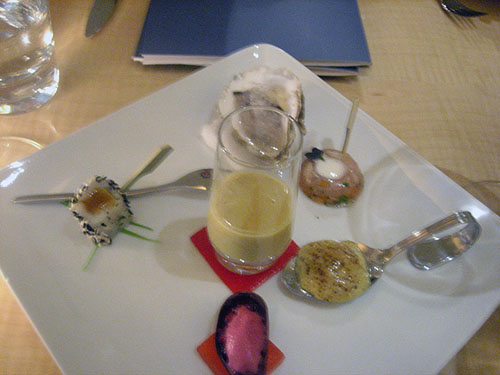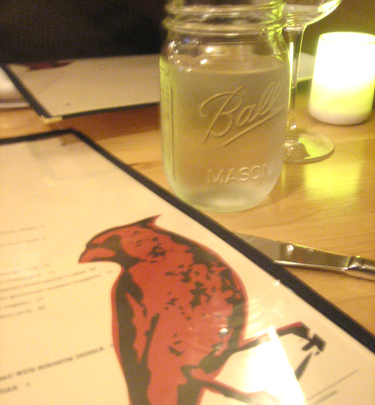Eating our way through NYC: Part one
Previous experience of Amtrak food had made us wise, so we combined the pernil that The Boy roasted for Christmas Eve and the baked ham I'd done for Christmas Day, and lunched on Cuban sandwiches while watching snowbound New England zip by.

We settled in at the hotel, rested for a short while, and then headed out to our first stop: a bar at a railroad station.
Okay, it was nicer than that. The Campbell Apartment used to be the office of a 1920s railroad tycoon, and was furnished in the style typical of rich men of the time ("Make it look as though I plundered it all from Europe!").
As we were there early on a Sunday evening, we'd expected it to be quiet. But the place was almost full, so we squeezed into a space at the bar. The solo, overwhelmed bartender was Andy Dick-level clumsy; while we sat there, he broke, spilled and knocked over more barware than we own.
Still, he muddled a lovely combination of Bourbon, fresh ginger, lime and rosemary:
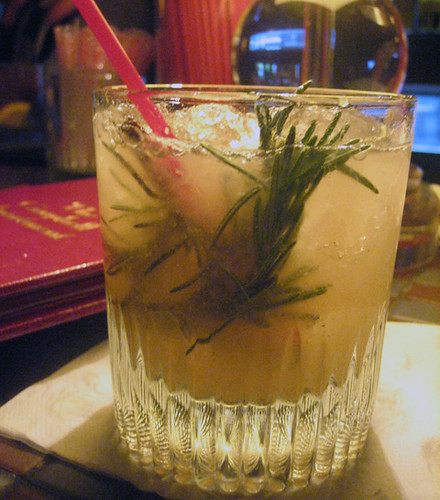
And then to dinner at Benoit, an Alain Ducasse joint. Our previous encounter with the Ducasse brand had been at the then-newly opened Adour, which was incredible.
Benoit, by comparison, was not so outstanding (and a comparison of menus shows just an average $10 difference in entrée price between the two).
On the other hand, The Boy got a lovely selection of magical animal in his choucroute:

And dessert was baba au rhum, served in an adorable domed silver dish:
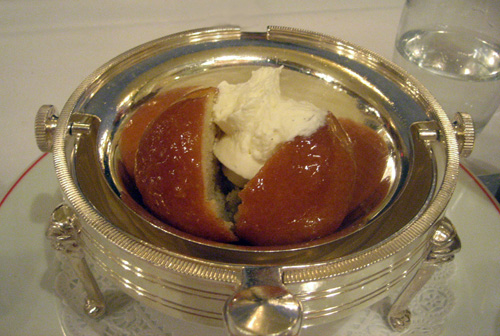
Time to roll back to the hotel and rest up before the next day's lunch.
First, a morning at MoMA, to check out the Tim Burton exhibit.
Then a brisk walk of a couple of blocks (coatless, because the line for MoMA's cloakroom was too damn long) to Le Bernardin.
As it's one of only four three-star restos in New York, and not a place for a cheap nosh, we expected the place to be hushed, refined; populated by the kind of people who respect the chef's art and the sanctity of a great meal. And, for the most part, that's who we found.
Apart from the old broad at the table behind us.
"Why is it all fish? You know I'm allergic to fish ... I can't eat anything on this menu. Oh, lobster, that I can have. Can you ask them to do me plain lobster, with butter, and just some steamed vegetables? I don't know why they have to have so much fish ... don't put your fork in my food, what are you doing? I can't believe this ... oh, I can't eat anything on the dessert menu, I'm allergic to everything ... just some vanilla ice cream, maybe two scoops."
I have no problem with people who have food allergies. I just don't understand:
a) Why someone would go to a seafood restaurant if they can't eat the central ingredient;
b) Why someone would go to a place known for exquisite, creative, thoughtful dishes if they have no interest/ability to try them;
c) Why someone can't KEEP THEIR DAMN VOICE DOWN.
I just had to get that out. Sorry. I feel better now.
Apart from that, the meal was fantastic, and I wish the photographic evidence had come out better.
I started with the freshest sea urchin I've had, served in a citrus broth:

The Boy had raw tuna, pounded thin and layered over foie gras:

then lightly breaded monkfish with a ginger-turnip purée:

and I had skate wrapped in nori, served with oysters and winter greens:

And then. Oh, and then.
Dessert.
See this?

Grapefruit, vanilla, tarragon. Soft, crisp, creamy, tart, cold.
And this?
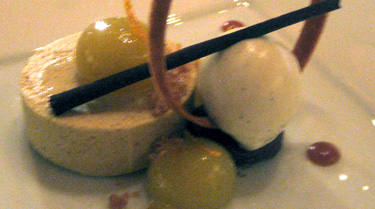
Okay, yes, the first word is "blurry." But then: cinnamon, caramel, pear, salt, fromage blanc. The green spheres are liquid pear. Liquid. It involves some molecular gastronomy magic, and results in a sphere of poached, puréed pear encased in a delicate skin, which bursts in the mouth, releasing sweet, spicy juice. Completely amazing.
Even made me forget the loud, allergic lady.
Labels: adour, benoit, bernadin, dining, fish, food, French, New York restaurants







